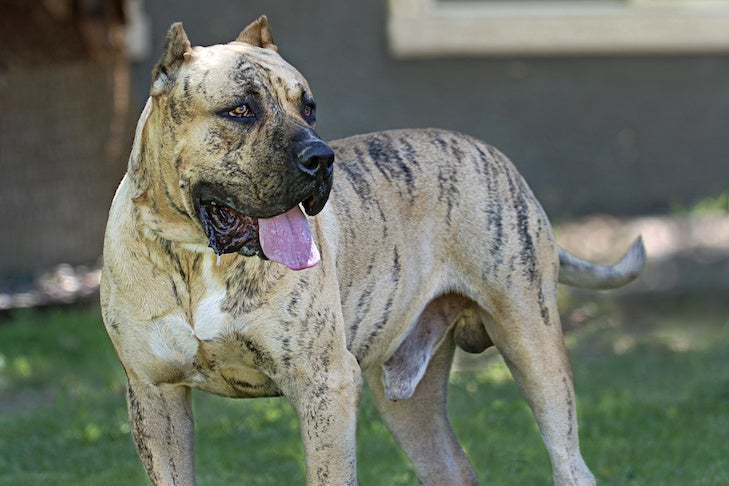
Let’s talk about prostate disease in male dogs. There are four types of prostate problems:
- Benign prostatic hypertrophy or hyperplasia, aka BPH: This is the most common prostate problem we see in unneutered or intact male dogs. It is frequently seen after the age of 5, and sometimes younger in Bernese Mountain Dogs and Greater Swiss Mountain Dogs. Symptoms are blood dripping from the penis not associated with urination, pain, on breeding; flat ribbon-like stools; and blood in the ejaculate. It does not get better with antibiotics. It does wax and wane, often if females in heat are in the vicinity. Benign prostatic hypertrophy or hyperplasia responds very well to hormone therapy. However, if left untreated it can lead to infertility, poor semen quality, and, eventually, prostatitis — as bacteria can move into the cystic structures in the prostate. It is best diagnosed with ultrasound, although a rectal exam can be used. On ultrasound, the prostate is enlarged and may have cysts looking like Swiss cheese.
- Prostatitis: This is also fairly common in unneutered male dogs. However, these dogs are sick — as sick as females with pyometra. They run a fever, are lethargic, won’t eat, and may die if the infection spreads into the abdomen, causing peritonitis. These dogs need both antibiotic and hormone therapy for BPH (see above), as this will shrink the prostate and make the cysts disappear, leaving the bacteria nowhere to set up shop.
- Prostate cancer: This typically occurs in neutered, not intact, male dogs. It can be either an adenocarcinoma or a transitional carcinoma that spreads from the bladder. Both are bad and don’t lend themselves to surgery. Medical management helps for only a short time. The only way to confirm prostate cancer is on biopsy of the prostate, which can be done with ultrasound-guided biopsy — far less invasive than opening a dog up.
- Paraprostatic cysts: These are rare, but dramatic. They are cysts that form outside the prostate and can be viewed on ultrasound or an x-ray. Paraprostatic cysts are best treated by being surgically corrected and when the dog is neutered.
Neutering will cure BPH and prostatitis. However, it is very difficult to breed neutered male dogs, unless they have had semen frozen. The best time to freeze semen is when a dog is between 2 and 5 years of age. The dog should be healthy and producing great quality semen. It will cost you a lot less money to freeze a canine’s semen when he is young. If he later turns out to have a disorder that you don’t want in your breeding program, you can either wait until a DNA test is conducted to determine how you can use him in your breeding program or discard the semen.
If you choose not to keep your dog’s frozen semen, check with your breed club to see if there are others who would value this resource. There are too many breeds that are becoming “endangered species,” so be mindful of that before you discard any semen. If your dog has prostate disease and is valuable to you or others for breeding, seek the services of a veterinarian who understands the diagnosis and treatment options for valuable breeding dogs. Don’t neuter him — this is not an emergency procedure.
And remember: freeze early and freeze often!
Dr. Marty Greer has run the Veterinary Village Small Animal Clinic in Lomira, Wis., since 1982. She is an expert in canine reproduction and a frequent lecturer on the subject. Dr. Greer also studied law at Marquette University and is a partner in Animal Legal Resources LLC.
This article is intended solely as general guidance, and does not constitute health or other professional advice. Individual situations and applicable laws vary by jurisdiction, and you are encouraged to obtain appropriate advice from qualified professionals in the applicable jurisdictions. We make no representations or warranties concerning any course of action taken by any person following or otherwise using the information offered or provided in this article, including any such information associated with and provided in connection with third-party products, and we will not be liable for any direct, indirect, consequential, special, exemplary or other damages that may result, including but not limited to economic loss, injury, illness or death.

